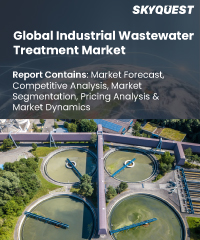
Product ID: SQMIG55D2003

Report ID:
SQMIG55D2003 |
Region:
Global |
Published Date: March, 2024
Pages:
182
|
Tables:
134 |
Figures:
77
With several large companies competing on a worldwide and regional scale, the industrial wastewater treatment industry is extremely competitive and fragmented. To increase their market share, major firms are forming partnerships, expanding their portfolios, and doing research and development. The top businesses also employ mergers and acquisitions, new product launches, geographical expansions, partnerships, collaborations, and agreements to increase their market share.
Top Player's Company Profiles
Our industry expert will work with you to provide you with customized data in a short amount of time.
REQUEST FREE CUSTOMIZATIONWant to customize this report? This report can be personalized according to your needs. Our analysts and industry experts will work directly with you to understand your requirements and provide you with customized data in a short amount of time. We offer $1000 worth of FREE customization at the time of purchase.

Product ID: SQMIG55D2003